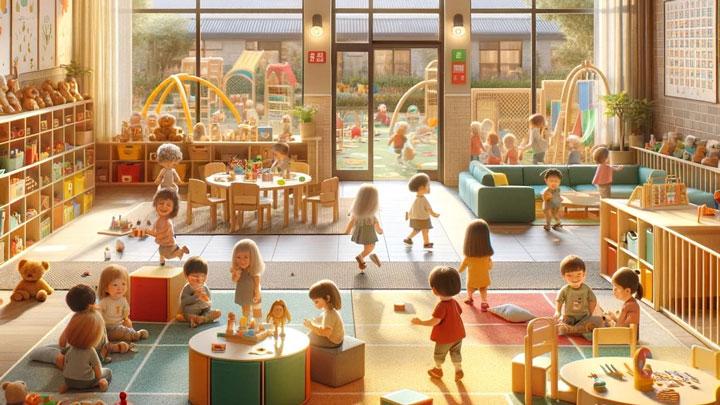Every parent wants their child to be safe, but ensuring safety in a daycare setting requires knowledge and vigilance. Daycare facilities vary widely in their safety practices, and without proper advice, it can be hard to know what to look for. Expert daycare advice for parents helps them identify facilities that prioritize safety, follow regulations, and maintain high standards of care.
For example, parents should know how to check for background checks on staff, verify certifications, and observe hygiene practices. The National Association for the Education of Young Children (NAEYC) offers guidelines that highlight key safety standards every daycare should meet. Advice on understanding these guidelines can help parents select daycares that comply with safety regulations.
Furthermore, emotional peace of mind is crucial. Knowing that your child is in a safe environment reduces anxiety and allows you to focus on other responsibilities. Daycare advice empowers parents with the confidence to make well-informed choices, ensuring their child’s safety and well-being.
Reliable daycare advice for parents not only ensures safety but also enhances the quality of care their children receive. When parents know what to look for in a safe daycare, they can make better decisions that protect their children from harm. For example, advice on evaluating safety protocols like fire drills, sanitation practices, and emergency preparedness plans helps parents choose facilities with comprehensive safety measures.
For children, being in a secure and well-supervised environment is essential for their development. A daycare that follows safety protocols ensures fewer accidents, promotes healthier habits, and provides a sense of stability. Consistent safety measures also teach children the importance of personal safety and hygiene.
In addition, clear advice helps parents communicate effectively with daycare providers. Knowing the right questions to ask about safety—such as staff-to-child ratios, supervision policies, and first aid training—can foster a collaborative relationship. This cooperation ensures that safety remains a priority, benefiting both parents and children.
Daycares that actively offer safety advice and guidelines to parents demonstrate a commitment to transparency and trust. Providing safety-related daycare advice reassures parents that their child’s well-being is a top priority. For instance, daycares that share their safety policies, conduct regular drills, and communicate openly about incidents build a strong relationship with families.
By educating parents on safety practices, daycares can also streamline their operations. When parents understand the importance of following drop-off procedures, illness policies, and emergency protocols, it creates a safer environment for all children. This partnership between parents and providers fosters a community focused on child safety.
Additionally, daycares that offer resources like safety checklists, workshops, or safety training sessions for parents show leadership and care. These initiatives enhance a daycare’s reputation, making it a preferred choice for families seeking secure and reliable childcare.
Offering comprehensive daycare advice on safety can set a daycare apart from competitors. In a crowded market, parents are more likely to choose a daycare that prioritizes safety and educates them on best practices. By sharing safety tips, resources, and transparent policies, daycares can build trust and loyalty among families.
Daycares that highlight their safety measures—such as staff training, facility inspections, and emergency preparedness—demonstrate professionalism and care. This transparency can attract more parents who value secure environments for their children. A daycare that proactively addresses safety concerns shows dedication and earns a positive reputation.
Furthermore, providing safety advice can lead to higher retention rates. Parents who feel confident in a daycare’s safety practices are more likely to stay long-term and recommend the daycare to others. This word-of-mouth marketing is invaluable for growing a daycare business and maintaining a competitive edge in the childcare industry.
Ensuring your child’s safety in daycare is a top priority. By seeking daycare advice for parents and knowing what safety standards to expect, you can confidently choose a secure environment for your child. Partnering with a daycare that prioritizes safety fosters trust, peace of mind, and a supportive community. Explore your options and prioritize safety today.





